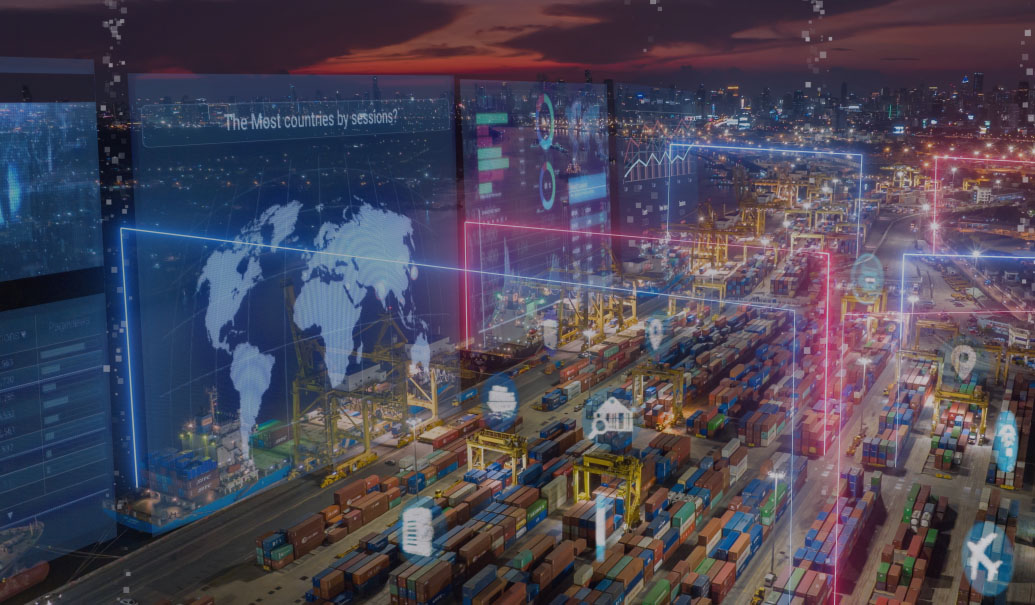AI in supply chains is reshaping the entire industry landscape. As advanced machine learning, predictive analytics, automation, simulations and connected data become increasingly accessible, businesses have a unique opportunity to reimagine how they operate. These capabilities are enabling a step change—driving supply chain transformation from rigid, reactive systems into intelligent, adaptive networks.
Historically, much of supply chain planning relied on deterministic or heuristic models—fixed parameters, standardized costs and stable demand assumptions managed through predetermined static scenarios. But in today’s dynamic, interconnected world, marked by complexity and volatility, that approach no longer suffices. The growing maturity of AI and data-driven technologies empowers organizations to shift toward probabilistic and proactive management. By embracing the inherent uncertainty in lead times, demand fluctuations, costs and capacity, companies can dynamically optimize operations through probabilistic modeling, predictive insights and real-time monitoring.
This evolution is more than just necessary. It’s an opportunity. Intelligent supply chains help businesses enhance decision-making, improve resilience, reduce costs and stay ahead of market dynamics, turning supply chain management into a true strategic advantage for the future.
5 capabilities that define an intelligent supply chain
The paradigm shift calls for supply chains to advance their intelligence to cope with new uncertainties. Advanced analytics platforms, data connectivity, simulation tools and sensing technologies are helping to drive this evolution.
- Internal and external connectivity. Real-time or near-real-time integration with suppliers, partners, distributors and broader market signals to ensure seamless collaboration and visibility across the network.
- Supply chain automation driven by AI. Leveraging AI, especially machine learning and agentic AI, to minimize human intervention in routine supply chain tasks, freeing up time from supply chain practitioners.
- Predictive diagnostics. Using data-driven insights to proactively identify and mitigate potential disruptions and deviations, reducing supply chain risks.
- Dynamic adaptability. The ability to autonomously adjust supply chain parameters based on real-time market changes, demand fluctuations and internal dynamics.
- Actionable insights. As automation, predictive capabilities and adaptability take over operational decisions, fewer but more strategic decisions remain. Here, advanced analytics and prescriptive recommendations ensure decision-makers have clear, data-backed options to optimize supply chain performance across product portfolios with varying margin profiles and criticality.
Use case: How supply chain AI inventory optimization prevents costly stockouts
Let’s take the example of rebalancing inventory across a supply chain. This process aims to ensure stock availability across distribution nodes while minimizing costs, preventing expiry and maintaining product integrity. Unlike traditional methods, which often react to stockouts or supply chain disruptions, intelligent inventory rebalancing processes leverage real-time data, predictive models, AI-driven forecasting and automated decision-making to optimize inventory positioning. When a shortage is anticipated at a specific location—whether due to a supplier delay, unexpected demand surge or transportation issue—predictive diagnostics within risk-sensing platforms identify the potential impact and trigger automated simulations and analysis to recommend an inventory transfer.
For example, if Distributor 5 is using an intelligent supply chain system and detects the risk early through external disruption sensing tools, the system immediately analyzes available stock at other distribution centers using real-time inventory data from the inventory management system. Historical supplier performance data from enterprise resource planning and advanced planning and scheduling platforms, along with AI-driven demand forecasts, refine the analysis by identifying the most reliable suppliers, anticipating potential fulfillment risks and aligning transfer decisions with expected demand surges.
Transportation costs, lead times and service level trade-offs are assessed in real time via transportation management systems (TMS) or transportation control towers to determine the most efficient way to move inventory. AI-powered decision engines within planning tools then generate optimal inventory transfer suggestions, prioritizing speed, cost-effectiveness and demand urgency. These recommendations are presented to supply chain managers for approval, or in highly automated environments, executed autonomously without human intervention.
Once a decision is made, an automated replenishment order is triggered within the enterprise resource planning system, instructing logistics teams to initiate the transfer. Notifications are sent to warehouse and transportation teams through integrated warehouse management system and TMS platforms, ensuring streamlined coordination. Simultaneously, customer service representatives receive updates on potential delays or revised estimated arrival times via customer service management tools, enabling them to communicate proactively with customers. Advanced analytics within supply chain control towers further refine this process by continuously monitoring disruptions and adjusting transfer strategies as conditions change.
This seamless, AI-driven approach minimizes disruptions, prevents stockouts and ensures that customers receive their orders on time, significantly improving service levels. By leveraging intelligent inventory rebalancing, companies can optimize stock distribution dynamically, reduce excess inventory at slow-moving locations and enhance overall supply chain agility and resilience.
Measuring your supply chain intelligence maturity: Where does your company stand?
To begin building supply chain resiliency, companies must first assess what steps they have already taken. We developed the ZS Intelligence Quotient (IQ) levels framework to measure maturity in AI adoption and automation.
- IQ Level 1, reactive. Minimal automation, slow information exchange and reactive problem-solving.
- IQ Level 2, basic. Moderate automation, basic AI applications and limited actionable insights.
- IQ Level 3, advanced. High automation, proactive risk identification and end-to-end supply chain visibility.
- IQ Level 4, proactive. Fully AI-driven decision-making, real-time predictive insights and a dynamic, self-adjusting supply chain.
To achieve true supply chain intelligence, organizations must progress toward IQ Level 4, leveraging AI, predictive analytics and automation to build a resilient, responsive and continuously optimizing supply chain ecosystem.
Your roadmap to supply chain transformation: 3 steps to start today
To future-proof supply chains, organizations must take initiative today:
- Assess your current supply chain IQ level and identify operational gaps.
- Invest in data, AI and predictive diagnostics to drive real-time visibility and decision-making across product portfolios, with special attention to high-value, short-shelf-life products.
- Implement real-time monitoring and automation to detect and respond to risks before they escalate.
For executives, the business case is compelling. Early adopters are already seeing benefits: reduced write-offs from expired products, improved service levels during market volatility and enhanced ability to respond to regulatory changes.
Embracing intelligence: The path to supply chain resiliency
As ZS, we believe having a targeted roadmap to achieve the proactive IQ Level 4, in combination with using common accelerators, sensing models and data products, is key to deliver short- and long-term value. An intelligent supply chain is not just about reacting faster. It’s about predicting, preventing and optimizing. Companies that integrate AI, predictive insights and automation into their supply chain will unlock high levels of efficiency, cost savings and customer satisfaction. More importantly, they will gain the agility to navigate volatility, pivot strategies in real time and build supply chains that continuously learn and improve.
Companies that embrace AI-driven intelligence will eclipse markets, outmaneuver disruptions and redefine industry standards.
In the race for supply chain excellence, intelligence is the fuel. Win with IQ, power with AI. The future is not waiting. It’s being built now. Companies that embrace AI-driven intelligence will eclipse markets, outmaneuver disruptions and redefine industry standards. The question is no longer if you should act but how fast you can.
Add insights to your inbox
We’ll send you content you’ll want to read – and put to use.















